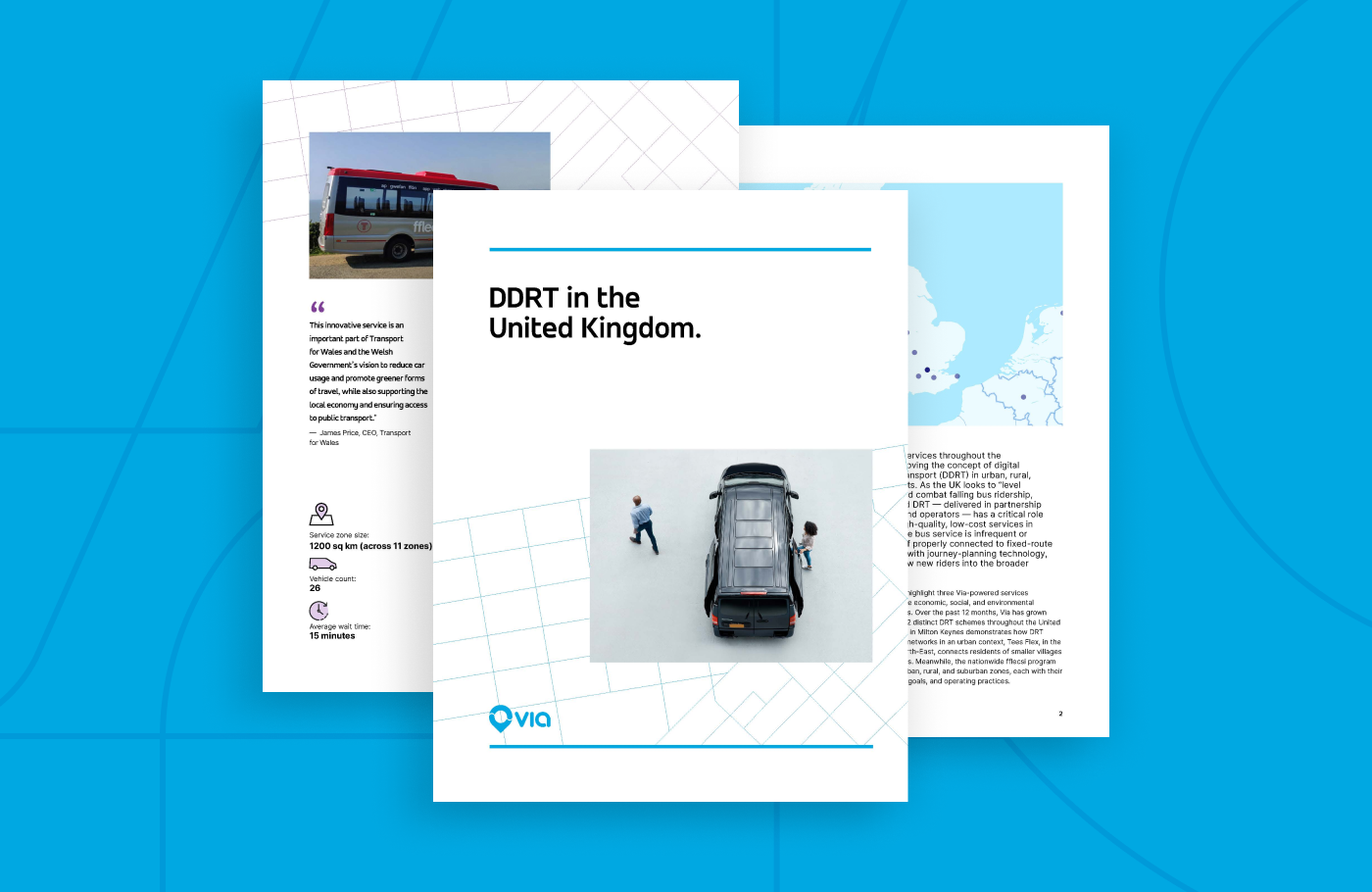Start reading.
As the UK looks to “level up” public transport, digital demand-responsive transport (DDRT) is proving a solution for a growing variety of transport challenges, including low-patronage fixed-route bus services, rural areas without any connections to transport, and nationwide transport networks looking to expand service.
This paper integrates case studies from three such demand-responsive services: MK Connect in Milton Keynes, Tees Flex in the Tees Valley, and fflecsi, which operates throughout Wales.
Learn how DDRT can:
- Supplement fixed-route networks in urban centres
- Connect residents of small villages to essential jobs and services
- Support multiple urban, rural, and suburban zones within a single deployment
- Add and remove service zones, such as mass vaccination sites, depending on community need
DDRT can also complement existing public transport through sophisticated journey-planning technology that directs riders to bus and train services instead of demand-response whenever possible. Register below to gain access to the details of each of these standout services, ridership statistics, and insights from local transport leaders.
